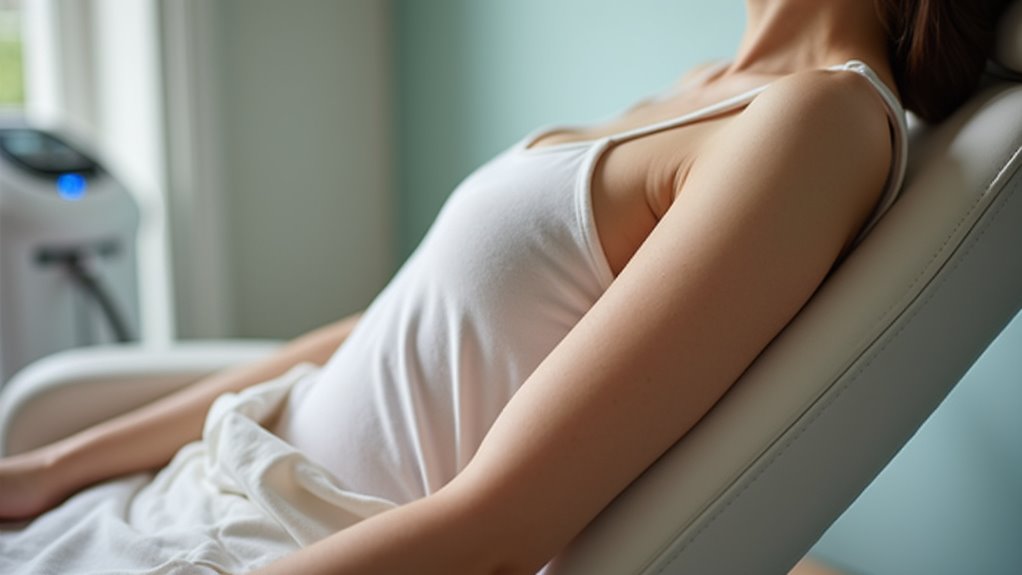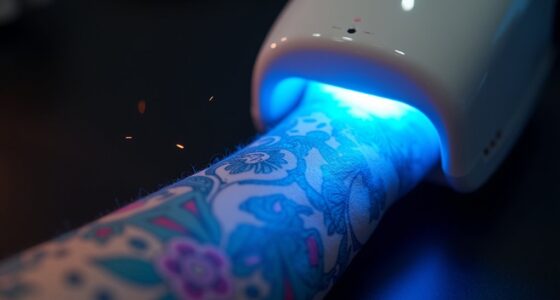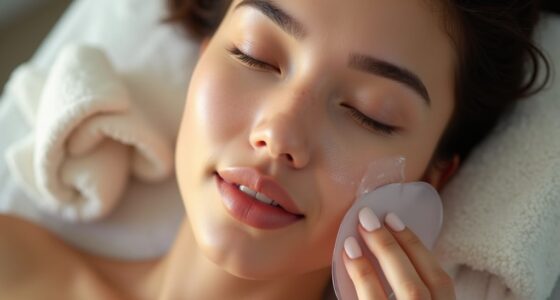Many people believe laser treatments cause ingrown hairs, but that’s a myth. In fact, when performed correctly, laser hair removal usually reduces ingrown hairs and promotes healthier skin. It targets hair follicles carefully, preventing hair from growing sideways or into the skin. Proper treatment, along with good post-care, minimizes irritation and ingrown hairs. Want to learn more about how to get the best results and avoid issues after laser hair removal?
Key Takeaways
- Properly performed laser hair removal typically reduces ingrown hairs, rather than causing them.
- Laser targeting minimizes skin irritation, decreasing the risk of ingrown hairs.
- Incorrect technique or inadequate cooling can cause irritation but not necessarily ingrown hairs.
- Laser treatments do not damage skin or worsen hair growth when done by professionals.
- Consistent skin care post-treatment helps prevent ingrown hairs after laser sessions.
Understanding Ingrown Hairs and How They Form
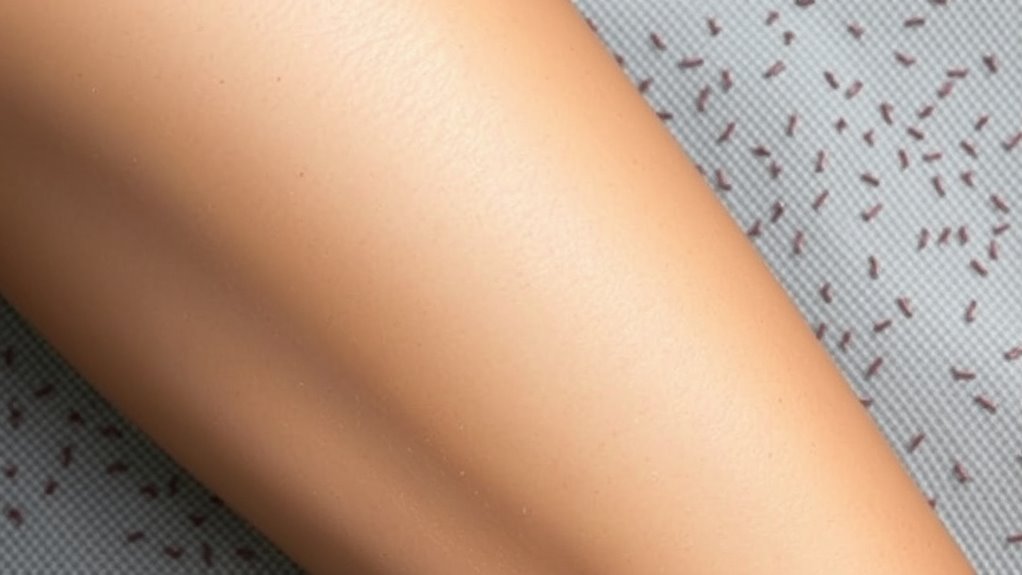
Ingrown hairs occur when hair grows back into the skin instead of rising up to the surface. This often happens due to follicle blockage, which traps hair beneath the skin. When this occurs, the hair’s natural re-growth pattern is disrupted, causing it to curve or break before reaching the surface. As the hair grows sideways into surrounding tissue, it can lead to inflammation, redness, and bumps. Factors like shaving, waxing, or tight clothing can increase the risk by irritating hair follicles and encouraging blockages. Understanding the typical hair re-growth patterns helps you recognize how ingrown hairs develop. Proper skincare and hair removal techniques can minimize these issues, but it’s important to know that ingrown hairs are primarily caused by how hair grows back, not necessarily by the hair removal method itself. Additionally, using appropriate hair removal methods that reduce follicle irritation can help prevent ingrown hairs from forming.
How Laser Hair Removal Works: A Closer Look
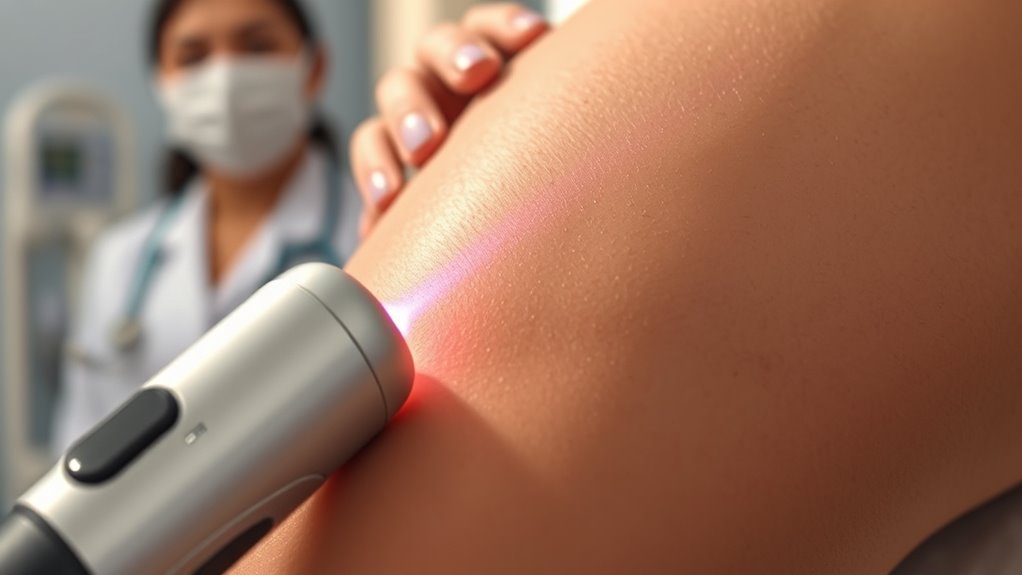
Laser hair removal works by targeting your hair follicles with focused light energy. Melanin absorbs this light, heating the follicle to inhibit future growth. Since hair grows in cycles, multiple treatments are necessary to effectively target all hairs during their growth phase. Additionally, data analytics can help track treatment progress and identify areas needing additional sessions.
Laser Targeting Hair Follicles
To target hair follicles effectively, laser technology emits highly focused beams of light that are absorbed by the pigment in hair strands. This energy heats the follicle, damaging it enough to inhibit future hair growth. Since the laser specifically targets pigment, hair color and follicle depth influence treatment success. You might notice that razor irritation and hormonal influences can affect hair growth cycles, making laser treatments more efficient when hair is actively growing. The laser’s precision minimizes damage to surrounding skin, reducing irritation. Over multiple sessions, the targeted follicles become less capable of producing hair, leading to smoother skin. This focused approach ensures that each pulse hits the follicle directly, offering a precise, effective method that addresses common concerns associated with traditional hair removal methods. Additionally, understanding the energetic alignment involved in such treatments can enhance overall results by promoting a positive mindset during the process.
Melanin’s Role in Heating
Understanding how melanin interacts with laser light is key to grasping how hair removal works. When you undergo laser treatment, the laser targets melanin in your hair follicles through melanin absorption. The pigment in your hair and skin pigmentation determines how effectively the laser heats the follicle. Generally, darker hair with more melanin absorbs the laser energy better, leading to efficient heating of the follicle. Conversely, lighter hair with less melanin absorbs less energy, making treatments less effective. Skin pigmentation also plays a role; individuals with lighter skin usually experience better results because less melanin in the skin absorbs laser energy, reducing the risk of skin damage. This selective heating is what makes laser hair removal both precise and safe. Additionally, the presence of sulfates in hair products can impact overall hair health and treatment outcomes.
Hair Growth Cycle Impact
The effectiveness of laser hair removal depends considerably on where your hair is in its growth cycle. During the anagen phase, your hair actively grows, and the follicle behavior is most receptive to laser energy. If you target follicles during this phase, you’re more likely to see permanent reduction. However, since hair follicles cycle through different stages, not all are ready for removal at once.
- Hair in the telogen phase is dormant and less responsive to laser.
- Multiple treatments are needed to target follicles in different stages.
- Laser works best when follicle melanin absorbs the light energy during active growth.
- Timing treatments with your hair cycle maximizes results and minimizes unnecessary sessions.
Common Myths About Laser Treatments and Ingrown Hairs
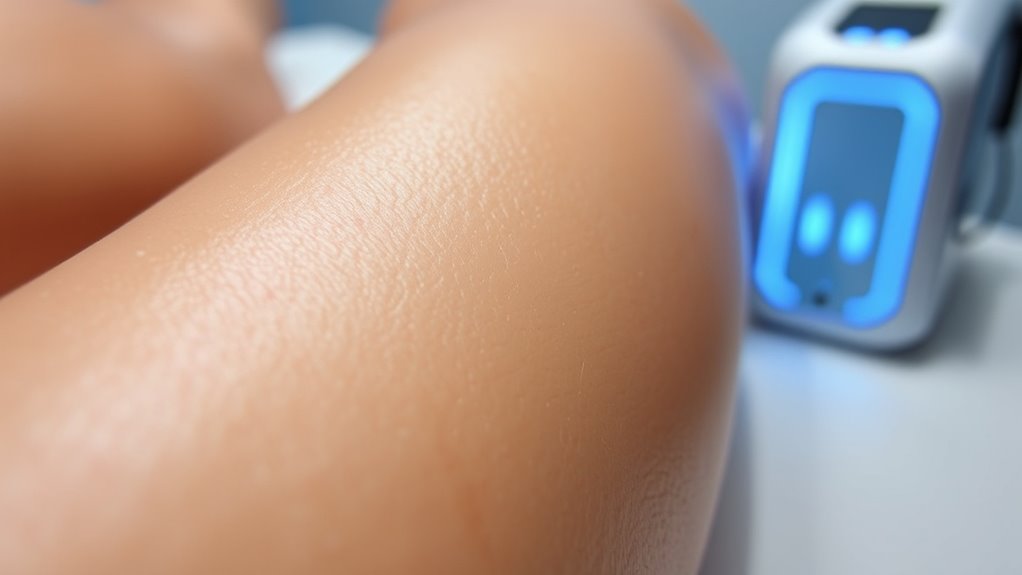
Many believe that laser treatments cause more ingrown hairs, but that’s a myth. In fact, laser hair removal often reduces ingrown hairs when done correctly. Laser hair removal targets hair follicles effectively, minimizing the chances of ingrown hairs by preventing hair from growing back into the skin. Let’s clear up the misconceptions and get to the truth about laser and ingrown hairs.
Laser and Ingrown Hair
Some people believe that laser treatments can worsen ingrown hairs or cause new ones to form, but this is a common myth. Proper laser procedures actually target the hair follicle, reducing hair growth and preventing ingrown hairs. When performed correctly, laser treatments minimize skin inflammation, which is often linked to ingrown hairs. If you experience skin irritation, it’s usually temporary and manageable. Vetted products and techniques ensure safety and effectiveness during laser hair removal.
- Laser breaks down hair follicle cells, preventing hair from growing back into the skin.
- Inflammation from laser treatments is controlled, reducing the risk of ingrown hairs.
- Incorrect technique or inadequate cooling can cause irritation, but not necessarily ingrown hairs.
- Proper aftercare supports healthy skin and minimizes the risk of complications.
Debunking Myths Around Laser
Are misconceptions about laser treatments causing more harm than good? It’s time for myth correction. Many believe that laser treatments damage your skin or worsen hair growth, but that’s not true. Laser hair removal targets hair follicles, reducing hair growth over time without harming surrounding skin. Some think laser causes ingrown hairs or thickens hair, but research shows it actually minimizes these issues. The myth that laser treatments lead to increased hair growth is just that—a myth. Properly performed laser sessions are safe, effective, and don’t cause unwanted hair growth or ingrown hairs. Additionally, understanding the regulatory standards that govern laser procedures can help ensure you receive safe and effective treatment. By understanding the facts, you can make informed decisions and avoid unnecessary fears. Laser treatments, when done by professionals, are a reliable way to achieve smooth skin without the myths holding you back.
The Science Behind Laser Hair Removal and Skin Response
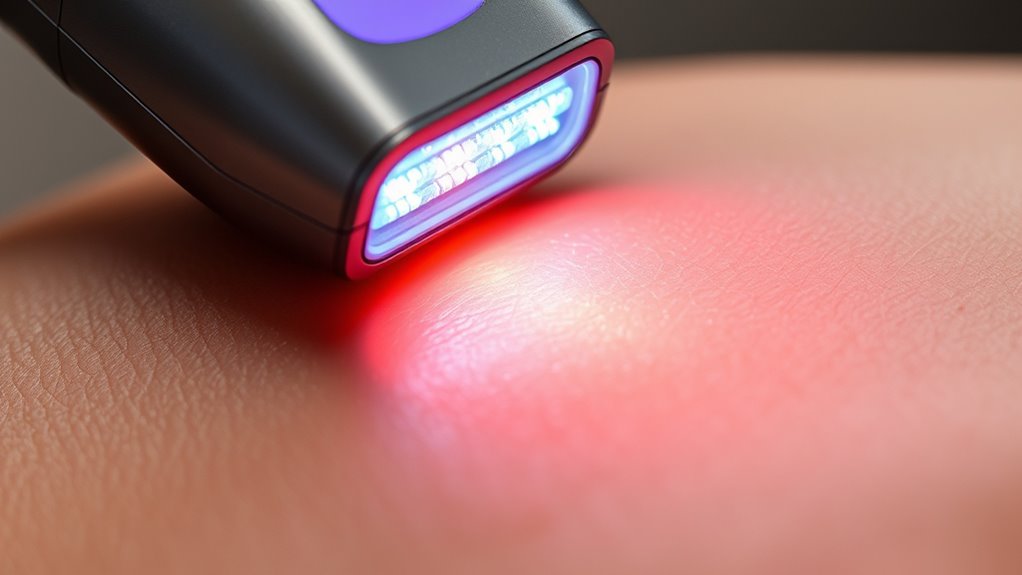
Laser hair removal works by targeting hair follicles with concentrated light energy, which is absorbed by the pigment in the hair. This process heats the follicle, damaging it to inhibit future growth. Your skin’s response depends on multiple factors, including hormonal influences that can affect hair growth cycles and responsiveness. Proper skin hydration enhances laser efficacy by maintaining skin elasticity and reducing irritation. The laser’s heat triggers a natural healing response, which can lead to temporary redness or swelling. Over time, treated hair sheds, and follicle damage prevents regrowth. To optimize results, verify your skin is well-hydrated before treatment and consider hormonal factors that may influence hair response. This understanding helps minimize side effects and improves overall treatment effectiveness. Additionally, lifestyle habits such as proper skincare and avoiding sun exposure can further improve treatment outcomes.
Factors That May Contribute to Ingrown Hairs Post-Laser

Despite the effectiveness of laser treatments, certain factors can increase your risk of developing ingrown hairs afterward. Pore clogging is a common culprit; if your pores become blocked by dead skin cells or excess oil, hair can grow sideways instead of outward, leading to ingrowns. Additionally, skin dryness post-laser can make your skin less flexible and more prone to irritation, increasing the chance that hairs will curl back into the skin. When your skin isn’t well-hydrated, it’s harder for hair to break through smoothly. Factors like improper exfoliation or neglecting moisturizing routines can worsen these issues. Incorporating skincare technology that monitors skin conditions can help you better manage post-treatment skin health, reducing the risk of ingrown hairs and supporting healthier skin after laser treatments.
Best Practices to Minimize Ingrown Hairs After Laser Sessions
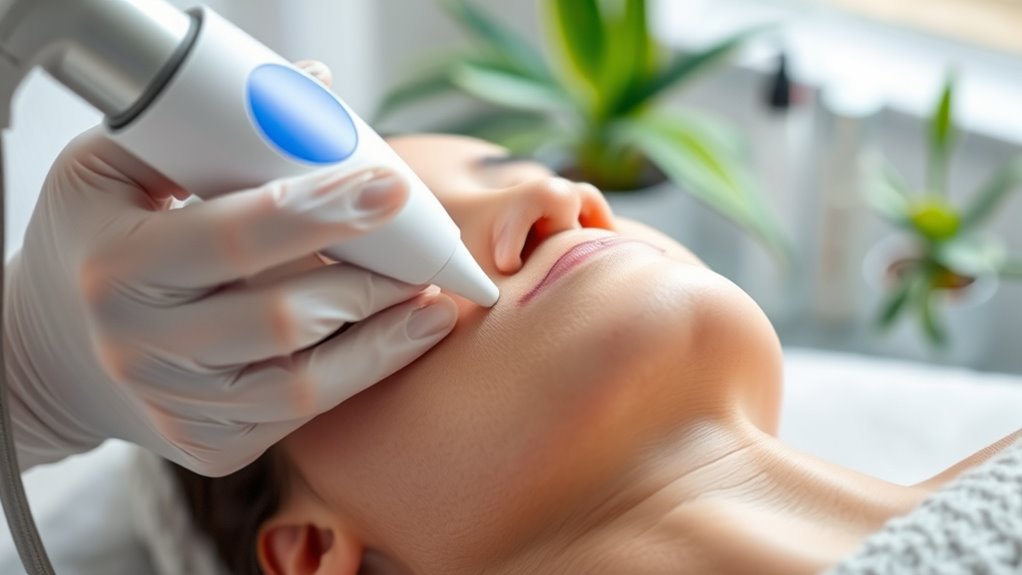
To minimize ingrown hairs after laser sessions, it’s essential to follow a consistent skincare routine that keeps your skin clean and well-hydrated. Proper aftercare helps reduce skin irritation and prevents hair from growing back into the skin. Avoid harsh scrubs or aggressive hair removal methods immediately post-treatment, as they can worsen irritation. Instead, gently exfoliate with a mild scrub or chemical exfoliant to loosen dead skin cells. Keep the treated area moisturized with soothing, non-comedogenic products. Wearing loose clothing helps prevent friction and irritation. Additionally, avoid sun exposure to reduce skin sensitivity. Using these best practices, you can support healthy skin and reduce the risk of ingrown hairs following laser hair removal. Incorporating Kia Tuning techniques can also improve skin resilience and overall skin health, further minimizing the chances of ingrown hairs.
When to Seek Advice From a Skin Care Professional
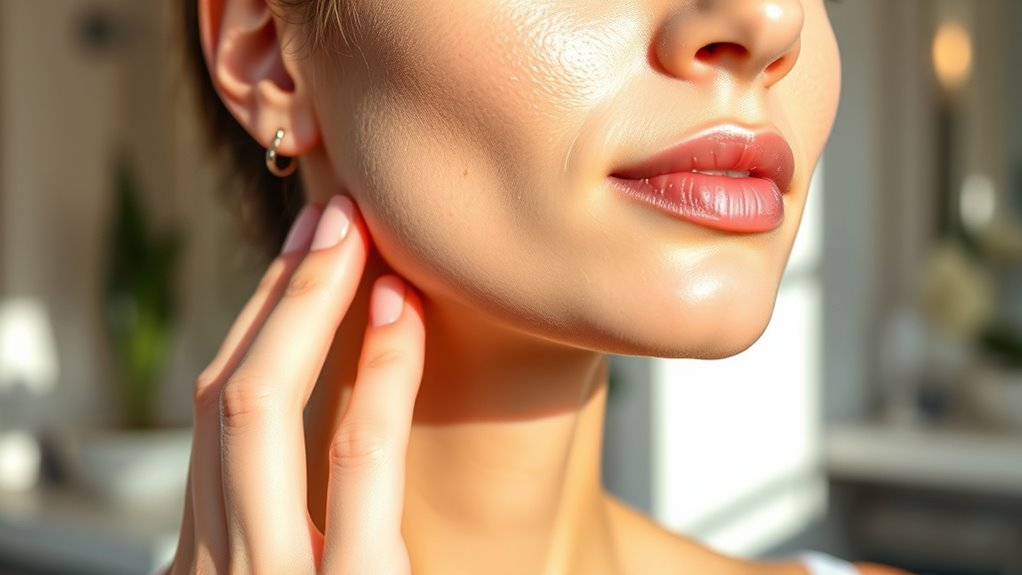
Knowing when to seek advice from a skincare professional is crucial if you notice persistent or worsening issues after laser hair removal. If your skin reacts badly or develops severe ingrown hairs despite following your skincare routine, it’s time to consult an expert. They can evaluate your skin’s response and recommend tailored treatments or adjustments to your hair removal methods. Warning signs include intense redness, swelling, pain, or signs of infection. Don’t ignore these symptoms, as they may indicate an underlying problem. A skincare professional can also advise on proper skincare routines to prevent future issues. Remember, seeking professional guidance ensures you use safe, effective hair removal methods and maintain healthy skin throughout your hair removal journey.
Frequently Asked Questions
Can Laser Treatments Cause Permanent Ingrown Hair Issues?
You might wonder if laser treatments cause permanent ingrown hair issues. Generally, laser side effects are minimal and temporary, focusing on hair growth suppression rather than causing ingrown hairs. While some people experience temporary irritation or ingrown hairs after treatment, these usually resolve quickly. Permanent ingrown hair problems are rare, especially when performed by a trained professional. Proper aftercare helps reduce the risk of ingrown hairs and guarantees the best results.
Are Certain Skin Types More Prone to Ingrown Hairs After Laser?
Your skin type can definitely influence how prone you are to ingrown hairs after laser treatments. If your skin is highly sensitive or has a low threshold for irritation, you might experience more ingrown hairs than others. Thick hair density also plays a role, as denser hair can sometimes lead to more ingrown hairs if not properly treated. Understanding your skin’s sensitivity helps tailor the treatment to minimize this pesky side effect.
How Does Shaving Before Laser Affect Ingrown Hair Risk?
Shaving before your laser treatment can influence ingrown hair risk, especially if you use harsh shaving techniques or don’t prepare your skin properly. Proper skin preparation involves gentle shaving, avoiding irritation, and guaranteeing the area is clean. When you shave carefully, you reduce the chances of irritation and ingrown hairs afterward. Always follow your provider’s advice on shaving techniques to minimize risks and ensure the best laser hair removal results.
Do Different Laser Technologies Influence Ingrown Hair Development?
Sure, different laser techs might seem like a science experiment, but they actually influence ingrown hair risks. Some lasers offer better laser safety, reducing irritation and ingrown hairs, especially when you stick to recommended treatment frequency. Others might not be as gentle, turning your smooth skin goal into a follicle fiasco. So, choose wisely, follow expert advice, and enjoy the hair-free life without worrying about pesky ingrowns.
What Are Alternative Hair Removal Options to Reduce Ingrown Hairs?
To reduce ingrown hairs, you should try alternative hair removal methods like sugaring or threading, which often cause less irritation. Incorporate waxing tips such as avoiding overly hot wax and not waxing irritated skin. Regular skin exfoliation helps prevent ingrown hairs by removing dead skin cells that clog hair follicles. These practices keep your skin smooth and less prone to ingrown hairs, making your hair removal routine more effective and comfortable.
Conclusion
Remember, laser hair removal isn’t a villain in your skincare story—it’s more like a gentle gardener tending your skin. While ingrown hairs can sometimes make an appearance, understanding the truth behind myths and following best practices keeps your skin smooth and happy. Think of it as nurturing a delicate garden; with patience and care, you’ll enjoy the beauty of clear, radiant skin blooming without worries. Trust the science, and let your skin flourish.
